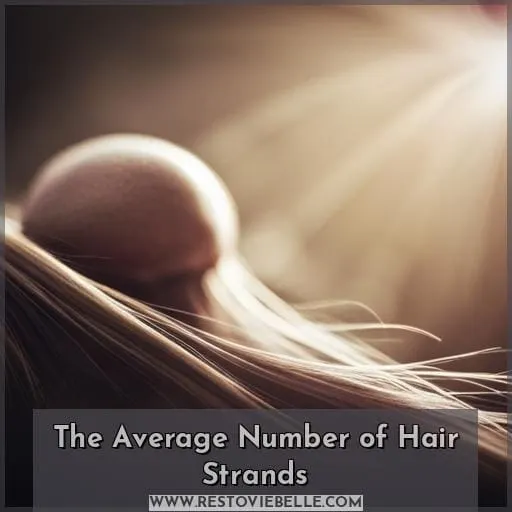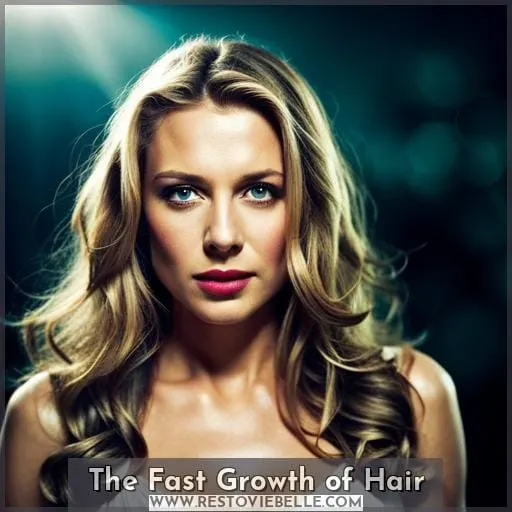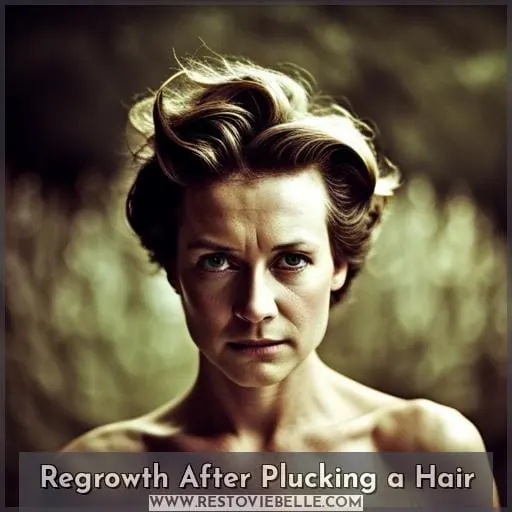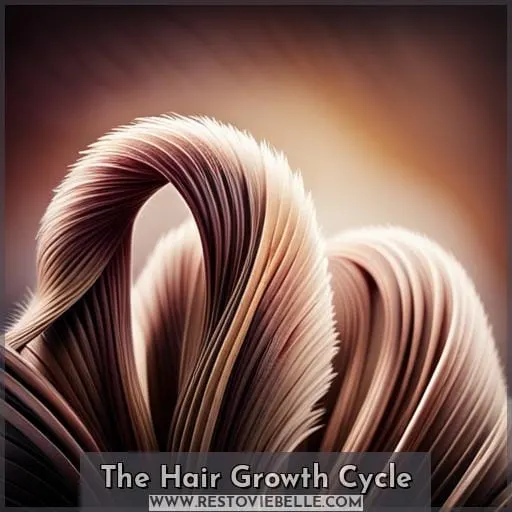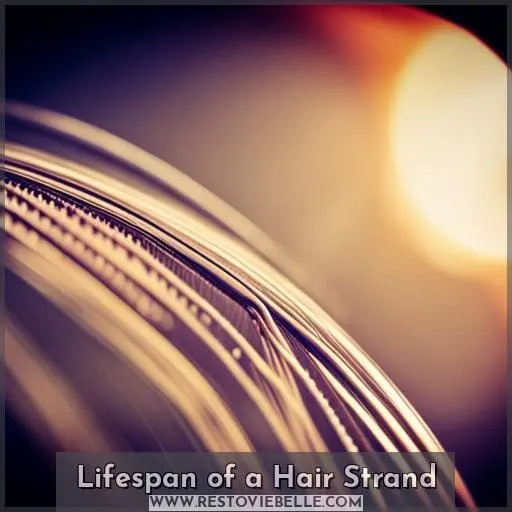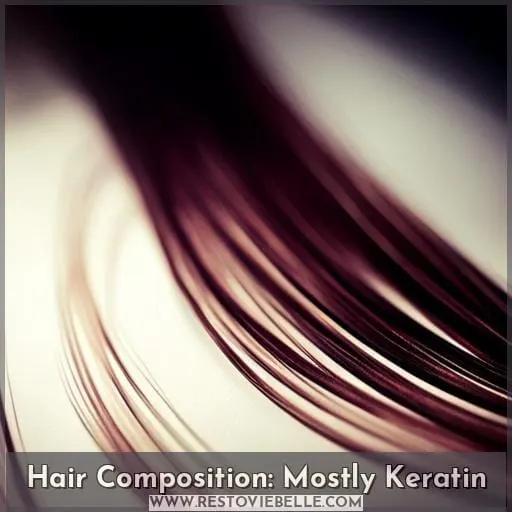This site is supported by our readers. We may earn a commission, at no cost to you, if you purchase through links.
 Pulling out all the stops! Let’s get to it – here are 20 fun facts about hair you may not know. From its strength and durability, to how much is shed in a day, this article will have you shaking your head in amazement.
Pulling out all the stops! Let’s get to it – here are 20 fun facts about hair you may not know. From its strength and durability, to how much is shed in a day, this article will have you shaking your head in amazement.
- A single strand of hair can support up to 6.5 pounds of weight – that’s enough for two tons if we’re talking about an entire head of locks!
- It takes around seven years for most people’s tresses to reach their waist and three years before reaching their shoulders when growing out from a short style or cut.
Get ready as these facts might just blow your mind away!
Table Of Contents
- Key Takeaways
- The Average Number of Hair Strands
- Shedding Hair: How Much is Normal?
- The Fast Growth of Hair
- Hair’s Response to Water
- Regrowth After Plucking a Hair
- The Hair Growth Cycle
- Lifespan of a Hair Strand
- Hair’s Strength and Durability
- The Science Behind Goosebumps
- Hair Composition: Mostly Keratin
- Frequently Asked Questions (FAQs)
- Conclusion
Key Takeaways
- Hair is primarily composed of keratin proteins, and its chemical makeup influences its attributes.
- Hair growth varies among individuals due to genetics, and the hair growth cycle includes growth, transition, and resting phases.
- On average, there are 100,000 to 150,000 hair strands on a human head, and hair strands have an average lifespan of about five years.
- Hair can hold up to 6.5 pounds of weight, and 50-150 hair strands are shed daily, influenced by factors like health and genetics.
The Average Number of Hair Strands
You might be surprised to know that the average head possesses between 100,000 and 150,000 hair strands! This significant number is not determined by race or gender – each individual’s unique restrictions can cause differences in textures as well.
The root of every strand lies within a single follicle, which has an active role in growth. Styling products and other chemical agents used for personal grooming can affect this process too.
Hair also carries cultural aspects, such as Madam CJ Walker becoming the first African-American millionaire due to her production of specialized hair care items.
Understanding how many hairs are on your scalp is key when considering shedding habits. 50-150 strands per day are normal if you have healthy locks! Not only does it vary from person to person, but even across various parts of one’s body because those hairs differ drastically in their shaft size and thickness, along with its follicles’ ability for regeneration after plucking or waxing.
Knowing these facts about your own precious tresses allows greater insight into its changing characteristics throughout life, giving us more control over our hairstyling decisions than ever before.
Shedding Hair: How Much is Normal?
On average, you shed 50-150 strands of hair every day. This is normal and nothing to be alarmed about. However, it’s important to understand balding patterns and how a healthy lifestyle can positively affect your scalp care routine.
Hair shedding rate varies depending on genetics, nutrition level, diet habits, and stress levels.
It’s also essential to practice good hygiene by shampooing regularly with quality products that work best for your unique type of hair length and texture.
Lastly, look into scalp massages, which stimulate circulation, bringing additional nutrients necessary for longer, stronger locks full of shine!
The Fast Growth of Hair
Discover how quickly your hair can grow – up to six inches in a single year! Heat-induced, environmental factors, and lifestyle choices all play a role in the rate of growth.
Hair is primarily composed of keratin proteins, which are responsible for its strength and resilience. Each strand has an average lifespan of five years. During this time, it experiences three phases: growing (90%), resting (10%), then shedding.
You may be surprised to know that not only does diet impact your overall health but also affects individual strands. Crash diets can lead to temporary loss or decreased production, as well as grey hairs caused by canities.
Canities is a scientific term for premature aging due to genetics or stress levels impacting cellular division rates at the root level.
With proper care, you can maximize potential length while keeping stronger follicles free from product buildup and damage from heat styling tools.
Hair’s Response to Water
Experience how water can affect the strength of your hair as it stretches around 30% when wet. Hair’s remarkable elasticity allows for such expansion, absorbing up to one-third of its dry length in water molecules.
This absorption is regulated by the cuticle layer and protein bonds that make up each strand, allowing them to swell without breaking or damaging follicles. However, excessive exposure and chemical treatments can cause permanent damage over time from drying out strands or pulling on already weakened hairs during styling techniques.
It’s important to use a moisturizing conditioner after every wash since wet hair is more vulnerable than dry hair due to its increased stretchiness. This will allow you to maintain healthy locks while avoiding strain on dead hairs that are unable to slow down stretching forces before breakage occurs.
By being mindful of these changes with regular care practices like deep conditioning masks, you can help keep your mane looking beautiful!
Regrowth After Plucking a Hair
You may be surprised to learn that a plucked hair can initiate new growth from the follicle, with up to 90% of hairs growing back in as little as three months. The effects of plucking depend on various factors such as hair anatomy, follicle conditions, and keratin levels.
Hair’s strength is largely due to its composition. The cortex layer contains melanin pigment for color or gray, the cuticles protect it from damage, and the medulla is woven between layers for elasticity.
Growth factors also play a role in how quickly regrowth occurs after plucking. Genetics determine the duration of the anagen phase, while health affects temporary loss during crash diets or chemotherapy treatments.
The Hair Growth Cycle
Understanding the hair growth cycle can help you maximize the health and appearance of your locks. Hair goes through distinct stages in its lifespan; each stage is influenced by genetic factors, lifestyle choices, and follicle health.
The anagen phase is when hair actively grows for a period that varies depending on genetic influence. During this phase, it’s important to keep heat damage to a minimum and avoid tight hairstyles that could cause breakage or traction alopecia if worn too frequently.
As hairs enter their resting or telogen stage, they are ready to shed while new strands begin growing from the same follicle during the catagen transition phase before entering anagen again.
Different textures and colors are affected differently throughout these phases. Blondes have a higher strand count than redheads, who have longer lifespans because of their thicker shafts, which protect them better against stressors like heat styling tools or chemicals used in perms/relaxers.
Taking care of your mane involves understanding how lifestyle influences overall texture, color, length, and amount so you can get the best results possible regardless of genetics!
Lifespan of a Hair Strand
On average, each hair strand on the human head has a lifespan of around five years! Hair growth and longevity are heavily influenced by preventative care, medicinal treatments, trichology studies, and scalp health.
The strength of follicles can also impact how long individual strands will remain in place before shedding naturally. Additionally, body hairs are known to have shorter lifespans than those found on our heads, while hereditary traits such as hair color inheritance may play an important role in determining overall strand length too.
Many myths surround how frequently or quickly we can expect our locks to grow; however, genetics remains one of the most influential factors when it comes to calculating a particular hair’s lifespan. Thickness and weight capacity also influence its ability to withstand environmental conditions like extreme temperatures or humidity levels, which could potentially accelerate breakage over time if not monitored properly, leading ultimately to premature loss from the root area, leaving the scalp exposed.
It is with this understanding that maintaining healthy habits regarding haircare should be considered essential for longer-lasting tresses free from any potential damage caused due to adverse circumstances beyond your control.
Hair’s Strength and Durability
Amazingly, a single human hair strand can hold up to 6.5 pounds of weight – making it stronger than copper wire with the same thickness! This has been proven through tension testing and force-bearing experiments.
Its impressive strength is also attributed to its flexibility, which allows it to withstand durability tests that other materials cannot pass.
Hair’s remarkable properties are even used in forensic evidence for analysis and comparison purposes, helping experts identify individuals based on their unique patterns of hair strands.
Furthermore, cutting one’s hair does not weaken the individual strands as they still maintain their original strength; however, regular grooming practices may be necessary depending on your lifestyle choices since split ends can reduce overall healthiness over time due to a lack of proper care and nourishment.
Ultimately, these facts demonstrate why people should invest in quality haircare routines tailored specifically towards promoting healthy strong locks while avoiding preventable breakage associated with inadequate techniques such as using too-hot water or improper detangling procedures.
The Science Behind Goosebumps
When you feel a chill, your body responds with the contraction of hair strand muscles – commonly known as goosebumps! Goosebumps occur when the arrector pili muscle contracts to form a bump on the skin.
This reaction is triggered by an abrupt drop in body temperature, stress levels, or fear and can be affected by genetic factors. It’s interesting to note that while some people may have more pronounced bumps than others due to differences in skin texture and air temperature fluctuations, men tend to experience them more often than women because male hormones influence their growth tissue differently.
Hair facts also inform us that estrogen prevents male-pattern baldness whereas testosterone initiates it. This shows how diverse our hair characteristics are influenced at different levels! A person’s knowledge of such intricate details helps them understand their own unique needs for healthy locks better, allowing them greater control over personalization of haircare routines.
This ultimately leads towards liberation from false myths about hair care practices.
Hair Composition: Mostly Keratin
You may not have realized, but your hair is primarily composed of the same material as horse hooves and manes: keratin. Chemical makeup, protein content, and color influence – all these attributes are determined by the level of keratin present in each strand.
Follicle formation starts in fetal development around five months. Genetics plays a role in how long this growth phase lasts for each person’s individual locks.
Hair color ranges from black to red and affects people’s perception of personality traits.
Cultural implications drive style trends. Today, 75% of women dye their hair compared to only 5% back in 1950.
Interesting information on women’s hair growth can be found:
- 50-150 hairs shed daily
- 90% of hair is growing while 10% is at rest at any given time
- The average lifespan of a hair strand is five years before shedding occurs. However, natural oils help maintain a healthy look over time!
Finally, understanding facts about our tresses allows us to become better informed when it comes to personal care routines that keep our locks looking lusciously beautiful!
Frequently Asked Questions (FAQs)
Can hair be damaged from heat styling?
Yes, heat styling can damage hair. Constant exposure to high temperatures weakens strands, leading to split ends and breakage. Heat also strips away essential oils needed for shine and softness. To protect your locks from such damage, use a heat protection product before using heated tools on your hair.
Does hair color affect its strength?
Hair color does not affect its strength, but the number of strands does. Blondes have more hair than redheads, which makes their hair stronger overall. The greater number of individual strands gives it extra support and helps it hold up to
What is the most effective way to promote hair growth?
Improve your hair growth with a balanced diet, quality sleep, and scalp stimulation. Eat foods rich in proteins and vitamins to ensure sufficient nutrients for healthy hair follicles.
Does stress cause hair loss?
Yes, stress can cause hair loss. It triggers a hormonal response that disrupts the normal cycle of hair growth and leads to thinning or balding.
Is there a difference between male and female hair growth?
Yes, male and female hair growth can differ significantly. Men tend to have thicker strands due to higher levels of testosterone, while women usually have fine, delicate hairs. Additionally, men’s anagen phase is longer than that of women, which leads to a faster rate of hair growth in men; a phenomenon often referred to as ‘male pattern baldness.
Conclusion
From the average number of hair strands to the lifespan of a hair strand, there is a lot to know about hair. It’s amazing to think that these delicate strands are so strong that they can hold up to 6.5 lbs. A single strand consists mostly of the same material as horse hooves and manes.
Additionally, the science behind goosebumps is quite interesting. They are caused by tiny muscles contracting in the hair strand when we feel cold or fear. Hair is a complex and diverse part of the human body. Understanding the facts about hair can help us make informed decisions about our hair care practices.
